Netty入门(三):EventLoop
前言
Netty系列索引:
IO相关:
上文提到,早期基于线程的网络模型,处理高并发的能力非常差,随着请求数量的增多,必须不断新建线程,随之带来的问题就是服务器资源被占满、上下文切换成本过高以及IO阻塞导致的CPU浪费。

而Netty则使用了经典Reactor模型,并重新进行了封装,包括EventLoop、EventGroup等。
EventLoopGroup
EventLoopGroup是一个接口,继承自线程池EventExecutorGroup,并允许注册channel到自身所持有的EventLoop,同时支持按一定规则获取下一个EventLoop。
EventLoopGroup的具体实现有很多,下面以DefaultEventLoopGroup为例,简述一下我的理解
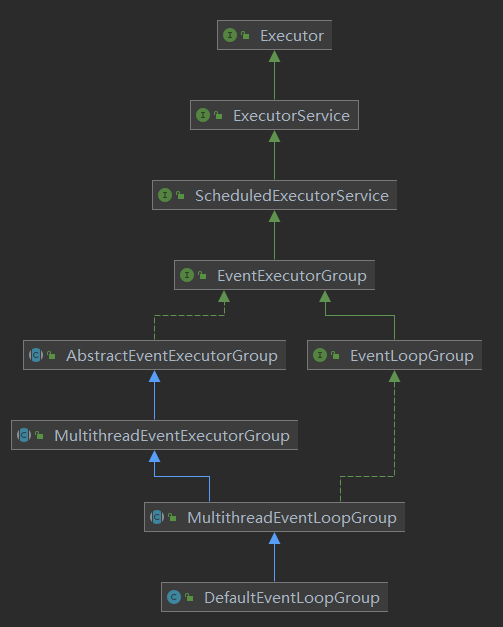
1.ScheduledExecutorService
JDK接口,一个延迟或定时任务的执行器,其实现类ScheduledThreadPoolExecutor主要是利用了延时队列及设置下次执行时间来实现的,这里不再赘述(可以单独开个专题0.0)
2.EventExecutorGroup
接口,Netty自定义的一个线程池,负责复用EventExecutor和执行任务
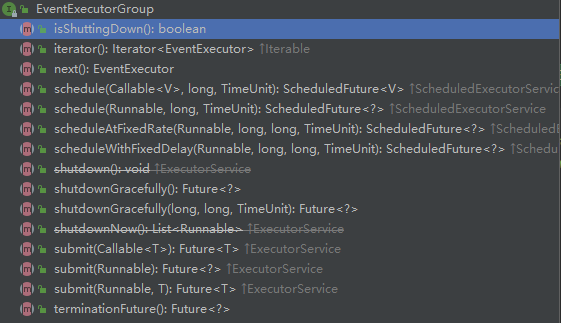
3.EventLoopGroup
核心接口,EventLoopGroup继承自EventExecutorGroup,代表他是一个线程池。同时他具备将channel注册到EventExecutorGroup的功能,代表他是一个能够真正处理Channel的特殊线程池

4.MultithreadEventExecutorGroup(AbstractEventExecutorGroup)
抽象类,实现自EventExecutorGroup接口,提供了一个简易线程池的实现,其只有一个抽象方法newChild(创建EventExecutor)供子类实现
1 | |
4.1 nThreads
1 | |
该线程池通过数组存储线程,入参nThreads指定数组大小,并循环调用newChild创建线程。当创建过程中有异常时,会自动调用已创建完成线程的shutdownGracefully方法,进行优雅关闭
1 | |
4.2 EventExecutorChooserFactory
EventExecutorChooserFactory是一个工厂接口,负责创建EventExecutorChooser
其默认实现DefaultEventExecutorChooserFactory会判断当前线程数是否2的n次幂,如果是则返回PowerOfTwoEventExecutorChooser,否则返回GenericEventExecutorChooser
4.3 EventExecutorChooser
1 | |
EventExecutorChooser负责根据一定规则从线程池children数组中取得下一个线程
PowerOfTwoEventExecutorChooser:通过&运算,将超出executors.length的位置为0
1 | |
GenericEventExecutorChooser:通过求余运算,获取有效index
1 | |
可以看出当线程数是2的n次幂时,Netty通过与运算优化了效率
5.MultithreadEventLoopGroup
抽象类,继承自MultithreadEventExecutorGroup并实现了EventLoopGroup接口,代表此抽象类是一个可以注册并处理channel的线程池
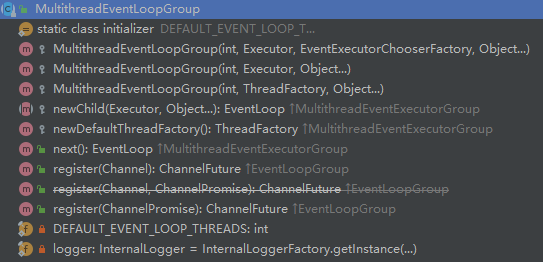
值得关注的是next方法,他把返回值的类型,进一步限定为EventLoop
1 | |
6.DefaultEventLoopGroup
MultithreadEventLoopGroup的一个默认实现
其核心就是实现了newChild方法返回一个EventLoop extends EventExecutor实例
1 | |
7.总结
说白了EventLoopGroup核心方法,register负责将channel与线程池中某一线程绑定,next负责返回下一个线程供调用方执行任务
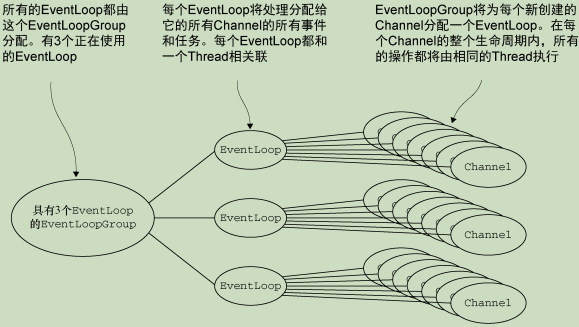
EventLoop
EventLoop直译为事件循环,他的职责简单来说就是绑定一个唯一的线程,去执行或调度被分配的任务。
可见一个EventLoop实例可以为多个channel服务,而为了最大化利用资源,Netty使用池化技术将EventLoop放入EventLoopGroup中管理。
EventLoop的具体实现有很多,先看下DefaultEventLoop的类图,会发现他和DefaultEventLoopGroup的类图很像,都继承了EventLoopGroup接口,但其最大的不同是红框所示,他还继承了EventExecutor,下面主要讲一下多出来的这部分到底是干了什么
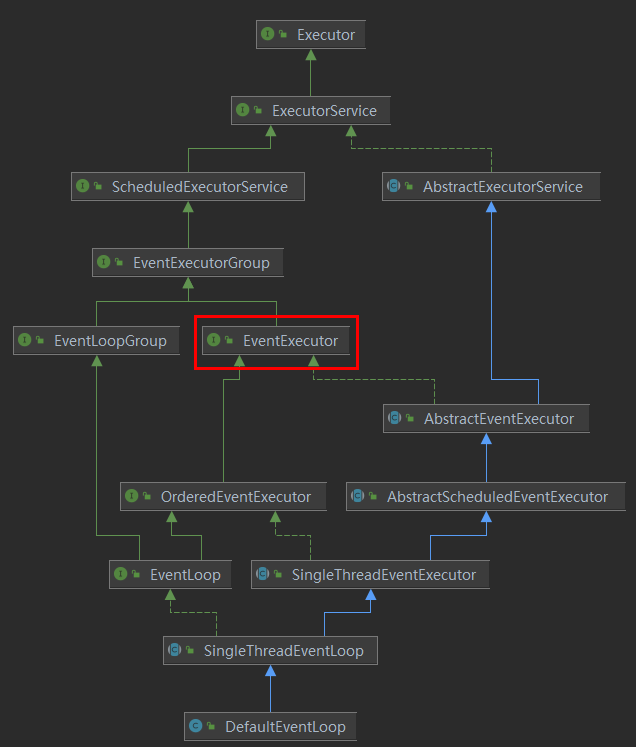
1.EventExecutor
接口,定义了一个事件执行器,主要方法如下
1 | |
(还涉及一些Future异步编程的一些东西,太复杂了后续再填坑吧0.0)
2.AbstractScheduledEventExecutor (AbstractEventExecutor)
抽象类,简单定义了一个支持延迟(定时)任务的执行器
1 | |
重要方法scheduled
1 | |
3.SingleThreadEventExecutor
抽象类,定义了一个单线程顺序执行器
1 | |
4.SingleThreadEventLoop
1 | |
EventLoop的抽象基类,负责在单线程中执行所有被提交的任务,同时具有注册和处理channle的能力
5.DefaultEventLoop
单线程任务执行器的默认实现,主要就是其实现的run方法
1 | |
6.总结
通过以上分析,不难看出Netty首先定义了自己的线程池(EventExectorGroup)和执行器(EventExector),然后通过继承的方式定义了线程池(EventLoopGroup)和执行器(EventLoop),从而添加了处理(注册)channel的能力。
You gotta grab what you can when you can.
机不可失,时不我待。
本博客所有文章除特别声明外,均采用 CC BY-SA 4.0 协议 ,转载请注明出处!